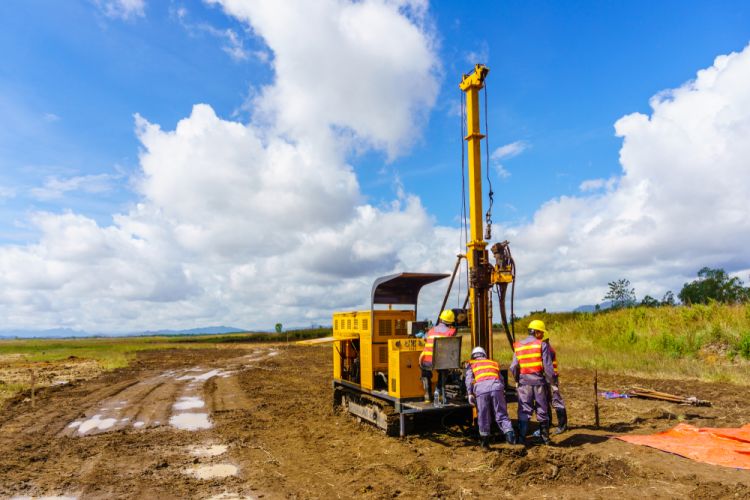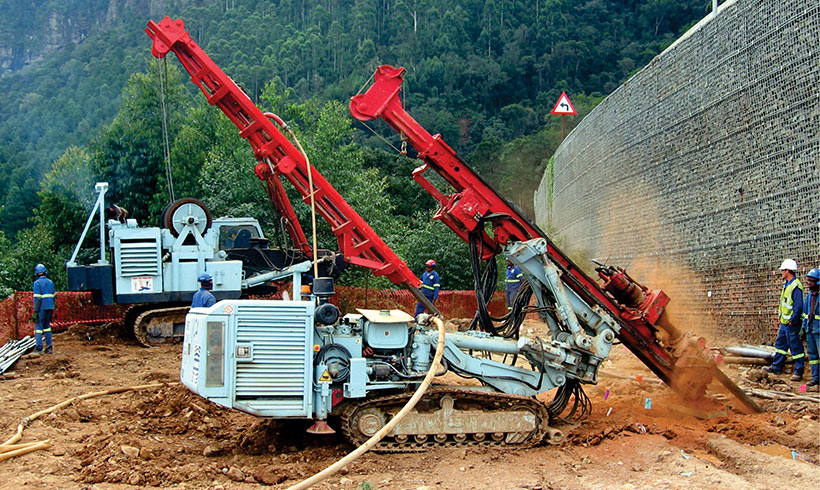Things about Specialized Geotechnical Engineering Solutions
Things about Specialized Geotechnical Engineering Solutions
Blog Article
The 8-Second Trick For Specialized Geotechnical Engineering Solutions
Table of ContentsThe Specialized Geotechnical Engineering Solutions StatementsFascination About Specialized Geotechnical Engineering SolutionsThe Greatest Guide To Specialized Geotechnical Engineering SolutionsThings about Specialized Geotechnical Engineering SolutionsSome Of Specialized Geotechnical Engineering Solutions3 Easy Facts About Specialized Geotechnical Engineering Solutions Shown
William Rankine, a designer and physicist, established an alternate to Coulomb's planet pressure theory. Albert Atterberg developed the clay uniformity indices that are still utilized today for soil classification. In 1885, Osborne Reynolds acknowledged that shearing causes volumetric extension of dense products and tightening of loose granular materials. Modern geotechnical engineering is stated to have actually started in 1925 with the magazine of Erdbaumechanik by Karl von Terzaghi, a mechanical designer and geologist. Terzaghi additionally established the framework for theories of birthing capability of structures, and the concept for forecast of the rate of negotiation of clay layers as a result of combination. Afterwards, Maurice Biot totally established the three-dimensional soil consolidation theory, expanding the one-dimensional version previously established by Terzaghi to extra basic hypotheses and presenting the set of standard equations of Poroelasticity.
Geotechnical designers explore and determine the buildings of subsurface conditions and products.
Specialized Geotechnical Engineering Solutions for Beginners
Geologic mapping and analysis of geomorphology are normally completed in appointment with a geologist or engineering rock hound. Subsurface exploration usually involves in-situ testing (for instance, the conventional penetration examination and cone infiltration test). The excavating of test pits and trenching (especially for locating faults and slide aircrafts) may also be made use of to discover about soil problems at deepness. Still, they are often used to permit a geologist or designer to be reduced into the borehole for direct aesthetic and manual examination of the soil and rock stratigraphy. Various soil samplers exist to fulfill the needs of various engineering tasks. The conventional penetration examination, which makes use of a thick-walled split spoon sampler, is one of the most typical way to accumulate disturbed examples.

If the user interface between the mass and the base of an incline has an intricate geometry, slope stability analysis is hard and mathematical remedy techniques are called for. Typically, the user interface's precise geometry is unknown, and a simplified user interface geometry is presumed. Finite inclines require three-dimensional models to be analyzed, so most inclines are analyzed presuming that they are infinitely broad and can be stood for by two-dimensional designs.
The Ultimate Guide To Specialized Geotechnical Engineering Solutions

Dimension of quantities and evaluation of Full Report actual conditions. It is inappropriate for tasks whose layout can not be modified during building.
Concepts of Geotechnical Design. Dirt Auto Mechanics and Structures. Interrupted dirt buildings and geotechnical layout, Schofield, Andrew N., Thomas Telford, 2006.
Specialized Geotechnical Engineering Solutions Fundamentals Explained
Principles and Method of Ground Enhancement. Ground Renovation Principles And Applications In Asia. Style evaluation in rock technicians.
Cengage Learning, Stamford, 666 p. Atkinson, J., 2007. The mechanics of soils and foundations. The Observational Technique in ground engineering concepts and applications.
5 Simple Techniques For Specialized Geotechnical Engineering Solutions
These records are customized to fulfill the specific needs of a task and include design specifications and guidance for the building of a series of manufactured structures. Along with providing working as a consultant solutions covering locations such anonymous as slope security and load-bearing capacities for different products, these designers carry out research and growth activities to enhance methodologies, devices, products expertise and analysis covering whole lifecycles (Specialized Geotechnical Engineering Solutions).
Engineering the properties and mechanics of rocks consisting of the application of characteristics, liquid technicians, kinematics and material mechanics. This unites geology, dirt and rock technicians, and architectural engineering for the layout and building and construction of foundations for a variety of civil engineering jobs. This field entails predicting the performance of foundation dirt and rock to a lots imposed by great site a framework, while thinking about efficiency, economic situation and safety.
However, rates of pay normally boost as your expertise and skills grow, with standards indicating a graduate beginning salary of between 18,000 and 28,000 per year in the UK. This increases to 26,000 to 36,000 with a few years of experience and after that getting to 40,000 to 60,000+ for elderly, legal or master designers.
About Specialized Geotechnical Engineering Solutions
With the ideal application it is feasible to master the career and gain access to a challenging yet rewarding and essential career. A rock hound would need to re-train to end up being a geotechnical designer, although there is a lot of cross-over between the 2 careers, which can make this simpler. Geologists require to have an understanding of soils, rocks and other products from a clinical point of view, while geotechnical engineers tale their knowledge of matters such as dirt and rock mechanic, geophysics and hydrology and apply them to engineering and ecological projects.
When starting, these engineers will often tend to service much less intricate tasks, building up knowledge and experience all set for even more challenging work later. Geotechnical designers often tend to be experts in certain areas as they grow in experience, concentrating on particular facilities such as trains, roads or water. These engineers additionally function with renewable energy, offshore and onshore oil and gas, nuclear power, and much more.
Report this page